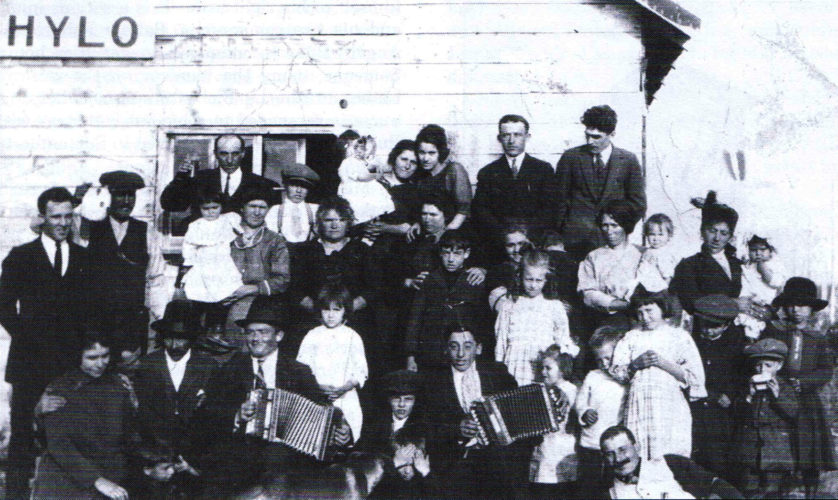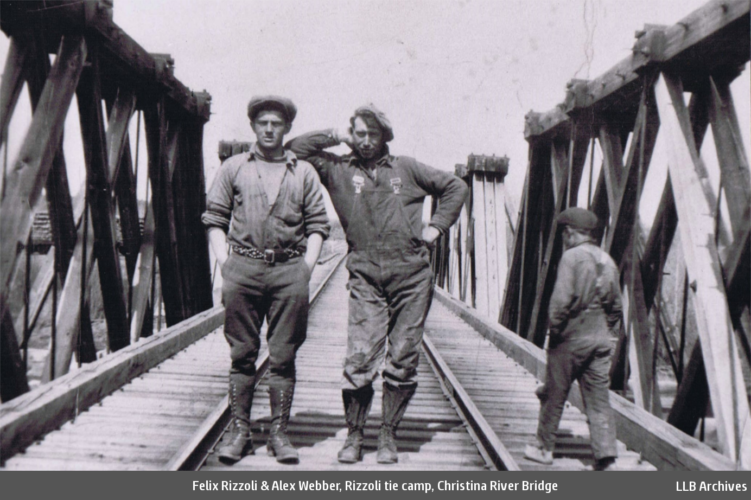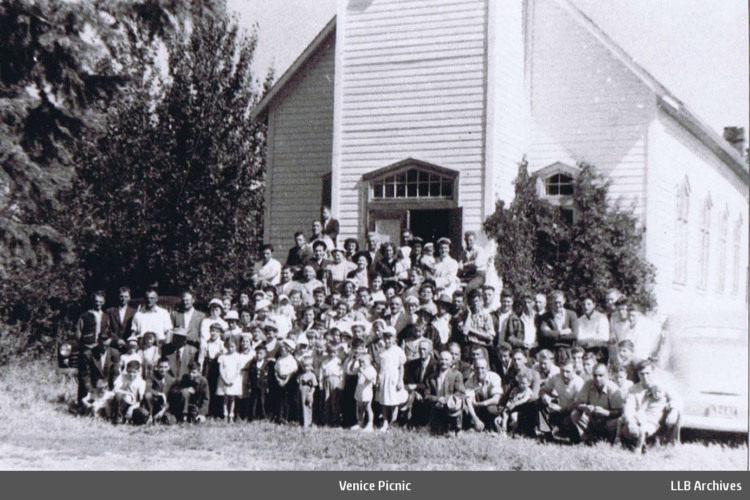Regional Cultures: Italians
During the 1870s, the region that would become Alberta was transitioning into a land of agricultural opportunity under the Dominion Lands Act, providing settlers with 160 acres of free land in exchange for a small administration fee and an agreement to cultivate at least 40 acres within three years. Over the next sixty years, around 118 million acres were given away under the Act. Such an offer was tempting to the many Northern and Southern Italians who would come to call this region home.
With the assistance of the Italian Society of Edmonton (La Società Vittorio Emanuele Terzo), arrangements were made for an Italian colony to be established in what would become the Hylo and Venice settlements. The first group of settlers left Edmonton on July 27, 1914, headed by an Italian consular representative, Felice De Angelis. The other five members of this party were O.J. Biollo, Pio Bonifacio, Antonio Piemonte, Teofilo Piemonte, and Beniamino Maragno.
“They didn’t even know what type of animals we had, as far as wildlife goes. They were from Italy. You don’t have moose in Italy! So, it was quite interesting. The first […] gentlemen that came, they thought they saw a fox. A black fox […]. They wanted to catch this fox, and the fox ended up being a skunk! Of course, they got sprayed. Then, they had taken their clothes off and soaked them in a river or creek, trying to get the stink out. Can you imagine the smell of the skunk? Ugh! Terrible, terrible!”
—Rosanna Giacobbo
The group surveyed the area, walking through bush and muskeg, before making their return to Edmonton, content with what they saw. On August 28, 1914, the second group of settlers (numbering 22) left Edmonton for the area. Both journeys were meticulously recorded by De Angelis in his diary, providing an intriguing glimpse into the life of early Italian settlers.

These settlers constructed tents as temporary shelters until they could register their homesteads at the Lac La Biche Mission and build shacks before winter. It was difficult adapting to the harsh climate, clearing farmland, and establishing a living, but they succeeded. To earn money, people would trap, cut lumber, and work on the railway in addition to farming.
“It’s not accurate to say they mostly came to homestead. To say that many of them made their living on the farm, no. The railroad, cutting ties, working on the rails. My ancestors all worked on the rails. Just farming itself, very few. Not the original ones, they couldn’t make a living on the farm. They worked in tie camps or actually worked on the railroad itself, making it. Extra gangs. My dad din’t farm a lot. We took over the farm after and we did more farming ourselves, me and my brother. My dad worked on the railroad most of his life. He started farming with his father, but like I said, they didn’t just have one thing going. Their farming, their agricultural habit. Lumbering, sawmills, either working in lumber camps or railroad. […] A few had cattle, few pigs, mostly that was the food supply for the family.”
—Leslie Biollo
The small community grew at a fast pace. On September 8, 1916, one settlement formally received the name “Venice” and opened the first post office with O.J. Biollo as the postmaster. The other, Hylo, is said to have been named by A & GW Railway workers after a card game.
The early Italians were primarily Roman Catholic. Before the construction of the Venice church, priests from the Mission would come during the summer to say mass in a railway shack J.D. McArthur’s men left standing. Determined to have their own parish, the Venice church was constructed in 1925 using donations of labour and construction materials from the parishioners. The church is home to the Venice Picnic, which has been held since 1927. Dances were also held in the parish hall with Albert Michetti playing the fiddle. One particularly lively evening, the music played beyond midnight, prompting the priest to come and put an end to the festivities.
Traditional Italian cuisine remains popular, such as the Christmas Eve dish bacalai, salted cod with tomatoes and capers. Other traditional dishes include dandelion salad with sausage and polenta (made from cornbread) with spaghetti sauce. Cheese was a main staple for the Italians and Mrs. Joe Michetti had a particularly famous style of grating cheese. As with many other ethnicities, nobody leaves hungry from an Italian home.

